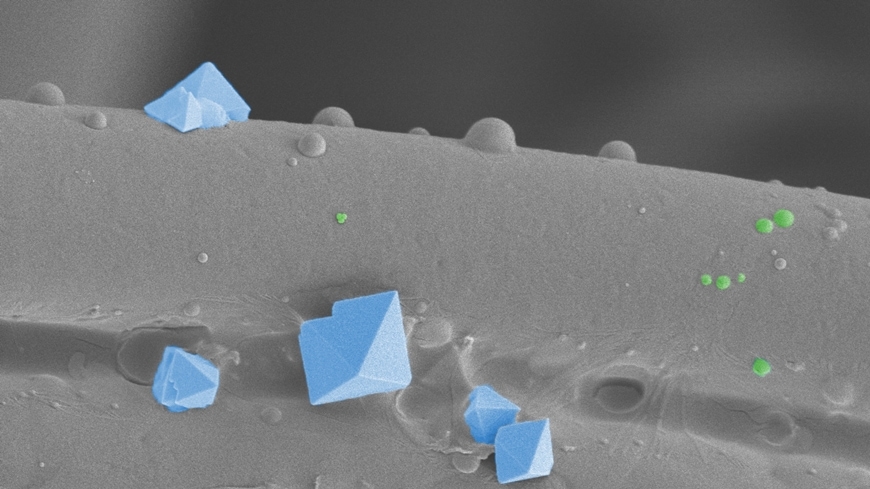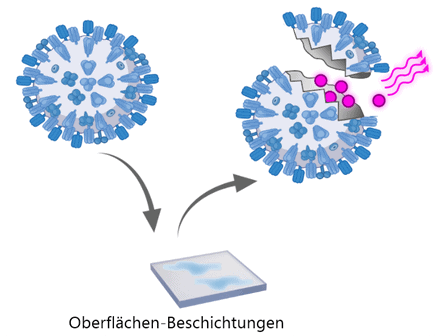Face masks: new method of virus killing surfaces
Using a new analytical method, Empa researchers have tracked viruses as they pass through face masks and compared their failure to pass through the filter layers of different types of masks. The new method should now accelerate the development of surfaces that can kill viruses, as the team writes in the journal Scientific Reports.

Using high pressure, the apparatus chases the red-colored artificial saliva fluid with test particles through a stretched mask. In this way, the researchers simulate the process of droplet infection. The method established at Empa is currently used by certified test centers to ensure the quality assurance of textile face masks, because a safe mask must meet demanding requirements: It must keep out germs, withstand splashing drops of saliva and at the same time allow breathable air to pass through.
Now the Empa researchers are going a step further: "Images taken using a transmission electron microscope reveal that a few virus particles manage to make their way into the innermost mask layer close to the face. However, the images do not always reveal whether these viruses are still infectious," says Peter Wick from Empa's "Particles-Biology Interactions" laboratory in St. Gallen.
The researchers' goal: They want to find out at which point a virus fails a multilayer mask during droplet infection, and which mask components should be more efficient. "For this, new analytical methods are needed to precisely understand the protective function of newly developed technologies such as virus-killing coatings," says Empa researcher René Rossi from the "Biomimetic Membranes and Textiles" laboratory in St. Gallen.
The new method therefore relies on the dye rhodamine R18, which emits colored light. Harmless, inactivated test viruses are used, which are coupled to R18 and thus become dying beauties: They light up in color as soon as they are damaged. "The fluorescence indicates reliably, quickly and inexpensively when viruses have been killed," says Wick.

Based on the intensity with which a mask layer glows, the team was able to determine that with fabric and hygiene masks, most viruses fail in the central layer between the inner and outer layers of the mask. In FFP2 masks, the third of six layers glowed the most - again, the centrally located layer trapped a particularly large number of viruses. The researchers recently published their results in the journal "Scientific Reports". These findings can now be used to optimize face masks.
"Surfaces with antiviral properties must comply with certain ISO standards, which entails time-consuming standard tests," explains Wick. The Empa researchers' fluorescence method, on the other hand, could be a simpler, faster and more cost-effective way of determining whether a new type of coating can reliably kill viruses, as a supplement to the currently valid standards. This would be of interest both for smooth surfaces, such as on worktops or handles, and for coatings on textiles with a porous surface, such as masks or filter systems.
Source: Empa









